
Carlos Alberto Zambrano Matos, nicknamed "Big Z" or "El Toro", is a Venezuelan former professional baseball pitcher. He played in Major League Baseball (MLB) from 2001 to 2012 for the Chicago Cubs and Miami Marlins. Zambrano, who stands 6 feet 4 inches (1.93 m) and weighs 275 pounds (125 kg), was signed by the Cubs as a free agent in 1997 and made his debut in 2001.

Charles Henry "Chinski" Root was an American Major League Baseball pitcher with the St. Louis Browns and the Chicago Cubs between 1923 and 1941. Root batted and threw right-handed. He holds the club record for games, innings pitched, and career wins with 201.

The 1927 World Series was the championship series in Major League Baseball for the 1927 season. The 24th edition of the World Series, it matched the American League champion New York Yankees against the National League champion Pittsburgh Pirates. The Yankees won in four games. This was the first sweep of a National League team by an American League team.

Edwin Americus Rommel was an American baseball player, coach, and umpire who played as a right-handed pitcher and in Major League Baseball. He spent his entire playing career (1920–1932) with the Philadelphia Athletics. He is considered to be one of the earlier adaptors of the modern knuckleball.

John Derran Lackey is an American former professional baseball starting pitcher who played in Major League Baseball from 2002 through 2017 for the Los Angeles Angels of Anaheim, Boston Red Sox, St. Louis Cardinals and Chicago Cubs. A three-time World Series champion with three different teams, Lackey is regarded as a key figure in his clubs' postseason success, winning the title-clinching games of two out of the three Series. Selected to the MLB All-Star Game in 2007, he won that year's American League (AL) earned run average (ERA) title. After missing the 2012 season due to ulnar collateral ligament reconstruction surgery in his pitching elbow, and helping the Red Sox win the 2013 World Series, Lackey was named the winner of the Tony Conigliaro Award.
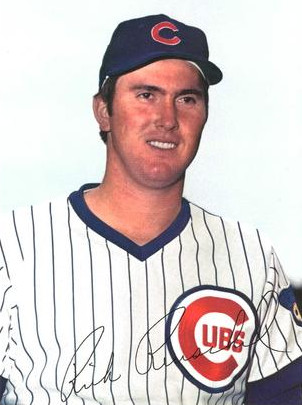
Rickey Eugene Reuschel is an American former professional baseball player. He played in Major League Baseball as a right-handed pitcher from 1972 to 1991, winning 214 games with a career 3.37 ERA. His nickname was "Big Daddy" because his speed belied his portly physique. He was known for his deceptive style of pitching, which kept hitters off balance by constantly varying the speeds of his pitches.

Lonnie Warneke, nicknamed "The Arkansas Hummingbird", was a Major League Baseball player, Major League umpire, county judge, and businessman from Montgomery County, Arkansas, whose career won-loss record as a pitcher for the Chicago Cubs and St. Louis Cardinals (1937–42) was 192–121.
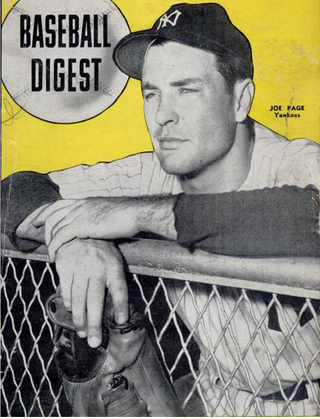
Joseph Francis Page, nicknamed "Fireman" and "the Gay Reliever", was an American professional baseball relief pitcher. Page, who was left-handed, played in Major League Baseball with the New York Yankees from 1944 to 1950 and with the Pittsburgh Pirates in 1954.

Thomas Edgar Cheney was an American Major League Baseball player. Cheney, a right-handed pitcher from Morgan, Georgia, played for the St. Louis Cardinals, Pittsburgh Pirates and Washington Senators in a span of eight seasons from 1957 to 1966.
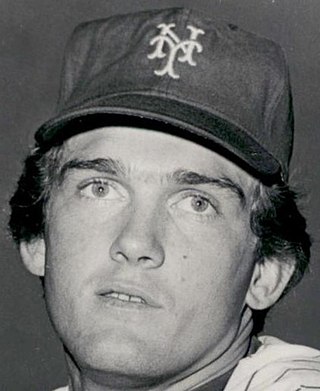
Thomas Matthew Hausman was a Major League Baseball pitcher. He was the first free agent signing of the New York Mets.
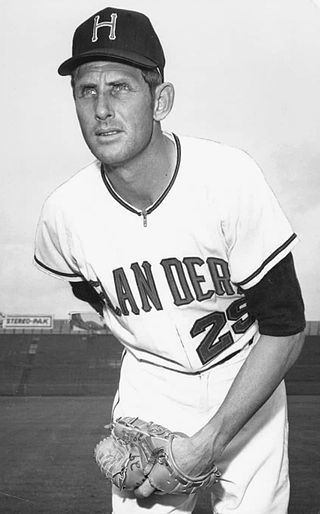
James Alton Coates was an American professional baseball pitcher. A right-hander, Coates pitched in Major League Baseball for the New York Yankees, Washington Senators (1963), Cincinnati Reds (1963) and Los Angeles/California Angels (1965–67). He was born in Farnham, Virginia, attended Lively High School, and was listed as 6 feet 4 inches (1.93 m) tall and 192 pounds (87 kg).

Perce Leigh "Pat" Malone was an American pitcher in Major League Baseball who played from for the Chicago Cubs (1928–1934) and New York Yankees (1935–1937). Listed at 6 feet 0 inches (1.83 m) and 200 pounds (91 kg), Malone batted left-handed and threw right-handed. He played for four pennant winners and two World Series champions.

Charles Leonard Estrada is an American former professional baseball player. He played in Major League Baseball as a pitcher from 1960 to 1967, playing for the Baltimore Orioles, Chicago Cubs, and New York Mets. Estrada was a member of the 1960's Baltimore Orioles Kiddie Korps. After his retirement from the major leagues, Estrada served as pitching coach in the majors.

James Sanford Lavender was an American professional baseball player who played in Major League Baseball as a pitcher from 1912 to 1917. He played a total of five seasons with the Chicago Cubs of the National League from 1912 to 1916; after being traded to the Philadelphia Phillies, he played an additional season in 1917. During his playing days, his height was listed at 5 feet 11 inches (1.80 m), his weight as 165 pounds (75 kg), and he batted and threw right-handed. Born in Barnesville, Georgia, he began his professional baseball career in minor league baseball in 1906 at the age 22. He worked his way through the system over the next few seasons, culminating with a three-season stint with the Providence Grays of the Eastern League from 1909 to 1911.

Robert Lane Miller was an American professional baseball player. He played in Major League Baseball as a right-handed pitcher from 1957 to 1974. Miller played for three World Series champions: the 1963 Los Angeles Dodgers, 1965 Los Angeles Dodgers and the 1971 Pittsburgh Pirates—five league champions and four division winners, as well as for four teams that lost 100 or more games in a season.
The 1933 Cincinnati Reds season was a season in American baseball. The team finished eighth and last in the National League with a record of 58–94, 33 games behind the New York Giants.
The 1909 Detroit Tigers won the American League pennant with a record of 98–54, but lost to the Pittsburgh Pirates in the 1909 World Series, 4 games to 3. The season was their ninth since they were charter members of the American League in 1901. It was the third consecutive season in which they won the pennant but lost the World Series. Center fielder Ty Cobb won the Triple Crown and pitcher George Mullin led the league in wins (29) and winning percentage (.784).
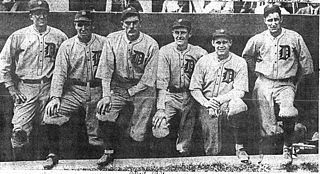
The 1921 Detroit Tigers finished in sixth place in the American League, 27 games behind the Yankees, with a record of 71–82. Despite their sixth-place finish, the 1921 Tigers amassed 1,724 hits and a team batting average of .316—the highest team hit total and batting average in American League history. Detroit outfielders Harry Heilmann and Ty Cobb finished No. 1 and No. 2 in the American League batting race with batting averages of .394 and .389, and all three Detroit outfielders ranked among the league leaders in batting average and RBIs. As early proof of the baseball adage that "Good Pitching Beats Good Hitting", the downfall of the 1921 Tigers was the absence of good pitching. The team ERA was 4.40, they allowed nine or more runs 28 times, and only one pitcher had an ERA below 4.24.

The 1932 Chicago Cubs season was the 61st season of the Chicago Cubs franchise, the 57th in the National League and the 17th at Wrigley Field. The Cubs finished first in the National League with a record of 90–64, four games ahead of the second place Pittsburgh Pirates. The team was swept four games to none by the New York Yankees in the 1932 World Series.
Kurt Everett Miller is an American former professional baseball pitcher. He played parts of five seasons in Major League Baseball (MLB), between 1994 and 1999, for the Chicago Cubs and Florida Marlins. He also played in two seasons in Nippon Professional Baseball (NPB), in 1999 and 2000, for the Hanshin Tigers.
















